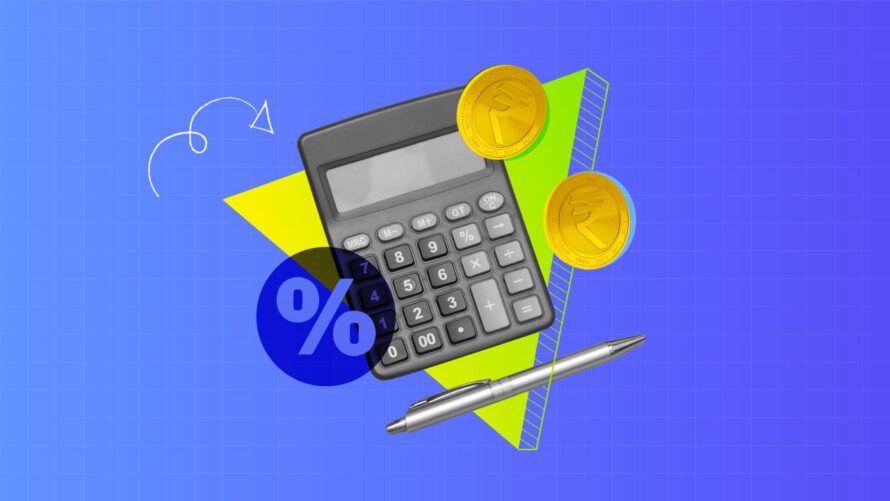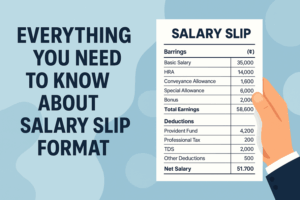
Finance Minister Nirmala Sitaraman presented the Union Budget 2025-2026 on 1st February 2025, providing a major relief for taxpayers. The budget comes amid slowing economic growth, pegged between 6.3% to 6.8% by the economic survey tabled on 31st January 2025.
Household consumption is a key driver of India’s economic growth. Thus, the budget’s focus was to boost consumption and revive demand. The budget attempted to boost consumption by the middle class by reducing the individual tax burden and increasing disposable income. The tax slabs and rates saw a major tweak, primarily benefiting taxpayers under the new income tax regime. Thanks to personal tax changes proposed in the budget, taxpayers earning up to Rs. 12 lakhs annually will not have to pay any income tax.
Read this blog as we decode the new income tax slabs and explain how rate changes impact your income.
Overview of income tax slabs under the New Tax Regime for FY 2025-26
As expected, the Union Budget 2025 offered a tax bonanza for middle-income taxpayers.
Individuals filing income tax returns under the new regime will have tax-free income up to Rs. 12 lakhs and will save Rs. 80,000 on taxes, which is essentially their entire tax liability, helped by a standard deduction rebate of Rs. 75,000.
The tax boost will bring cheer to the Indian middle class, boosting spending in the next financial year.
A comparison of tax slabs between FY 2024-25 and FY 2025-26 under the new tax regime.
| FY 2024-25 Income Tax Slab | FY 2025-26 Income Tax Slab | Income Tax Rates |
| Up to Rs. 3 lakh | Up to Rs. 4 lakh | NIL |
| Rs.3 lakh – Rs.7 lakh | Rs.4 lakh – Rs.8 lakh | 5% |
| Rs. 7 lakh – Rs. 10 lakh | Rs.8 lakh – Rs.12 lakh | 10% |
| Rs. 10 lakh – Rs. 12 lakh | Rs.12 lakh – Rs.16 lakh | 15% |
| Rs. 12 lakh – Rs. 15 lakh | Rs.16 lakh – Rs.20 lakh | 20% |
| — | Rs.20 lakh – Rs.24 lakh | 25% |
| Above Rs. 15 lakh | Above Rs. 24 Lakh | 30% |
Taxpayers opting for the new tax regime will enjoy lower income taxes, as the income limits for all tax slabs have been revised.
Note: No income tax up to Rs. 12 lakh does not mean that the top three slabs mentioned above do not exist. Because of the way tax slabs are designed after accounting for Standard Deduction of Rs. 75,000, individuals with an income up to Rs. 12 lakh per annum will not pay any taxes for the financial year 2025-2026.
The standard deduction for the New Tax Regime:
Standard Deduction amount stays constant at Rs. 75,000.
| Standard deduction 2023-24 | Standard deduction 2024-25 | Standard deduction 2025-26 |
| Rs. 50,000 | Rs. 75,000 | Rs. 75,000 |
Overview of income tax slabs under the Old Regime for FY 2025-26
No changes have been made to the old tax regime in Budget 2025-2026. Those opting for the old tax regime will continue to enjoy the same benefits and deductions of the previous year.
A Comparison of tax slabs between FY 2024-25 and FY 2025-26 under the old tax regime.
| FY 2024-25 Income Tax Slab | FY 2025-26 Income Tax Slab | Income Tax Rates |
| Up to Rs. 2.5 lakh | Up to Rs. 2.5 lakh | NIL |
| Rs. 2.5 lakh – Rs.5 lakh | Rs. 2.5 lakh – Rs.5 lakh | 5% |
| Rs. 5 lakh – Rs.10 lakh | Rs. 5 lakh – Rs.10 lakh | 20% |
| Rs. 10 lakh and above | Rs. 10 lakh and above | 30% |
Note: There wasn’t a mention of changes to the old tax regime in the budget speech, but we might get more information on the Old Tax Regime in the Income tax Bill which will be introduced by the finance minister next week.
Old vs. New income tax regime
There are two different income tax regimes in India under which taxpayers can avail tax benefits. The new tax regime was introduced in Budget 2020 in addition to the old regime.
Taxpayers are free to choose between the two regimes. The tax-paying individual needs to choose between the two tax regimes based on which one offers the most favorable tax outcome. For example, those who wish to avail substantial deductions and exemptions may prefer the old regime to maximize tax benefits.
Individuals in the lower tax bracket and those looking for a less complex tax regime could choose the new tax regime.
The new tax regime now offers the benefit of a higher standard deduction as compared to the old tax regime, not to mention lower tax rates for lower and middle-income tax slabs. The changes proposed in the Union Budget 2025-2026 might change your tax regime preference.
New income tax regime
Benefits of the new income tax regime:
- The new tax regime offers lower tax rates.
- Under the new regime, the tax exemption limit has been increased to ₹4 lakhs
- The new tax regime has a simpler tax structure.
- The new regime offers a higher standard deduction of Rs. 75,000 compared to Rs. 50,000 in the old regime.
Drawbacks:
- The new regime does not allow taxpayers to claim deductions and exemptions.
- The new tax regime offers limited tax planning opportunities.
Old income tax regime
Benefits of the old tax regime:
- The old scheme offers a wide range of deductions and exemptions.
- Taxpayers can invest in tax-saving instruments like PPF, NSC, and tax-saving fixed deposits.
Drawbacks:
- The old regime can appear complex due to numerous exemptions and deductions, requiring in-depth knowledge and meticulous record-keeping.
- The old regime has higher tax rates for different income slabs.
Tips for high earners to reduce taxable income
High earners have to pay higher taxes due to the progressive tax system where tax rates increase as an individual’s income increases. Consequently, high-income individuals incur a significant tax liability, which reduces the amount of money they can save. Therefore, tax planning is crucial for individuals who fall under higher tax brackets.
Here are some effective ways for high earners to reduce their taxable income:
- Invest in Section 80C eligible products like PF, PPF, and ELSS, for a deduction of up to Rs 1.5 lakh from taxable income.
- Purchase health insurance to claim a deduction under Section 80D.
- Avail tax deductions on House Rent Allowance (HRA), if you receive it.
- Reduce taxable income by claiming deductions on home loan interest under Section 24, up to Rs 2 lakh.
- Save on taxes by keeping money in your savings account. Under Section 80TTA, savings account interest is tax-exempt up to Rs 10,000.
- Donate to government-approved charities to claim deductions between 50%-100% of the donated amount under Section 80G.
- Staying informed about tax laws and keeping yourself updated on the latest changes in tax laws can be beneficial in tax planning.
In addition to changes to the personal income tax slabs, the budget announced significant changes to TDS (tax deducted at source) and TCS (tax collected at source). These changes can potentially free up more income for taxpayers. But these changes require closer reading and research on our part to decode it for you.
We at Lemonn will publish a detailed post after going through the Budget fine print.
Conclusion
The Union Budget 2025-2026 might go down in history as one of the best budgets for middle-income taxpayers. While the income tax relief proposed under the new tax regime will increase income in the hands of the taxpayers, it also means the government will have to let go of significant income from direct taxes in the coming financial year.
Income tax in India is calculated based on specific income tax slabs and rates outlined in the Union Budget for each financial year. For FY 2025-26, there are notable changes in income tax slabs, impacting the tax liability for individuals.
Tax planning should align with an individual’s financial goals and needs. One should do thorough research or consult tax experts to devise a comprehensive tax strategy to reduce tax liability.y
Frequently Asked Questions
1. Do I need to file an income tax return if my annual income is below Rs.2.5 lakh?
You need not file an ITR if your yearly income is below Rs.2.5 lakh, but you should file a ‘Nil Return’ just for the record as you can produce it as proof of your employment. For instance, you can provide your ITR while applying for a loan or passport.
2. How is the income of a taxpayer classified?
Ans. Under Section 14 of the Income Tax Act, the taxpayer’s income has been classified under 5 different income heads: Salaried individuals, Capital gains, Gains/Profits from profession or business, Income from house property, and Income from other sources.
3. Does the family pension come under salary income during taxation?
No, family pension will not be taxed under salary income but as ‘income from other sources.’
4. Will my income be taxed if I am an agriculturist?
Any income which is generated from agriculture or allied activities is not taxed. However, it will be considered for calculating total tax if you have any non-agricultural income along with income from farming.
5. Is income up to Rs.5 lakh tax-free?
No, income up to Rs.5 lakh is not tax-free. However, individuals who earn an income of up to Rs.4 lakh in a financial year do not have to pay taxes under the new tax regime.
6. Can I switch the income tax regime for my tax filing?
Yes, you can choose to file your income tax returns as per the old regime or the new regime as per your preference.
7. Are income tax slabs in India subject to change?
Yes, the income tax slabs in India are subject to changes.
8. Who makes changes to the income tax slabs in India?
The changes to the income tax slabs in India are proposed by the Ministry of Finance, government of India.
9. When are the changes to the income tax slabs in India proposed?
The changes to the income tax slabs in India are announced by the finance minister when the annual budget is presented every year in the month of February.







